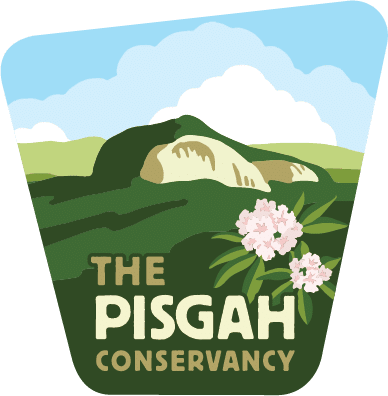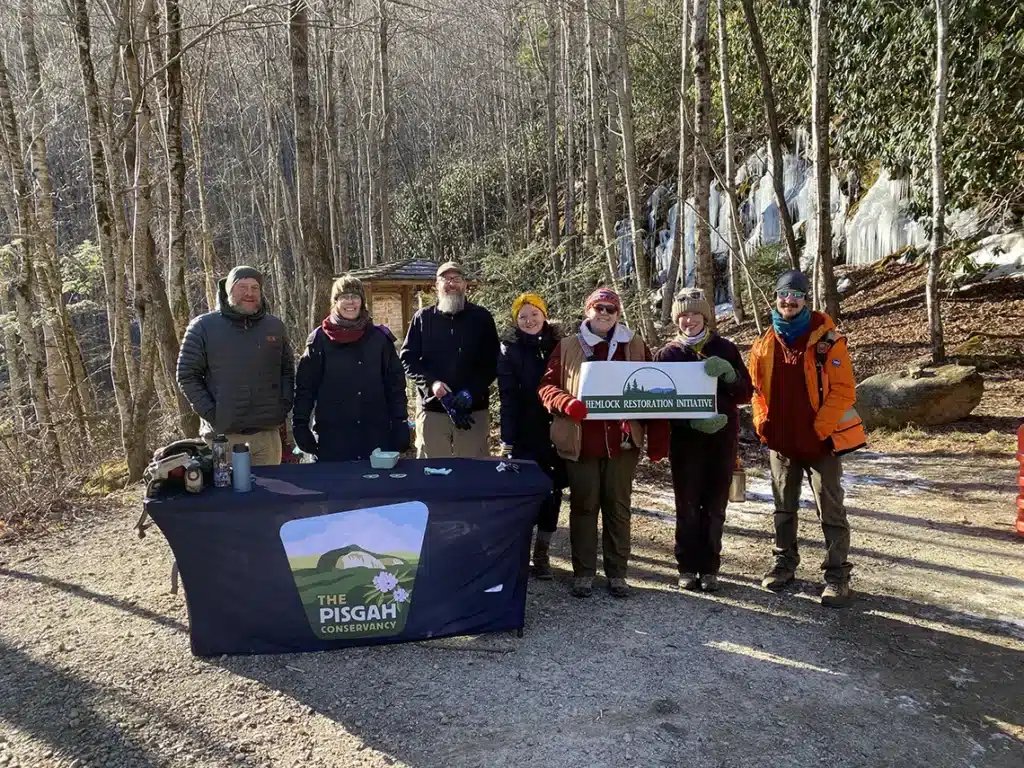Eastern Hemlocks in Pisgah
The eastern hemlock occurs up and down the east coast from Canada to Alabama, spreading as far west as Minnesota. Affectionately nicknamed the ‘redwood of the east’, it can live for over 500 years and reach heights of more than 170 feet. It is typically found in riparian areas, growing along headwater streams, in moist, shady groves, and on north facing slopes. – Via the Hemlock Restoration Initiative
Unfortunately, an insect called the hemlock woolly adelgid – which is native to Japan and China – was first observed on a hemlock tree in the eastern United States in the early 1950s and it has been causing alarming mortality rates of hemlock trees ever since.
Efforts to Conserve Eastern Hemlocks
“Eastern hemlocks provide vital forest benefits, including wildlife habitat, keeping water cool in streams to support river life, and helping to stabilize soil and prevent erosion.”
– Alison Ormsby, Forest Specialist, Adventure Scientists
This volunteer field day was part of a large-scale ‘Tracking Eastern Hemlock’ project led by Adventure Scientists to track eastern hemlock populations in select national forests in North Carolina, Tennessee, Virginia, West Virginia, Kentucky, and New York.
Through the project, Adventure Scientists aims to identify and document “lingering” eastern hemlock trees that appear to have survived hemlock woolly adelgid infestations and may possess genetic resistance to it. By locating these resilient trees, they aim to support conservation efforts to breed and propagate resistant hemlocks, aiding in the restoration of these vital forest ecosystems.
How Volunteers Got Involved
During this volunteer outing, participants split into small groups and hiked nearby trails to search for “lingering” eastern hemlock trees. When they encountered an eastern hemlock tree, volunteers used a smartphone app to conduct their assessment and submit their data. This information will help Adventure Scientists and their research partners determine which trees are candidates for breeding and reforestation programs.
“It’s always exciting to support unique projects in Pisgah and engage with volunteers who are eager to contribute. Leading a group up the infamously steep Old Butt Trail took us out of typical hemlock habitat but looking across the valley into the Shining Rock Wilderness Area – that’s an image that inspires. I’m grateful to assist and advise whenever a partner wants to conduct important work like this on the Pisgah Ranger District.”
– Simon Farr, Trails and Recreation Technician, The Pisgah Conservancy



